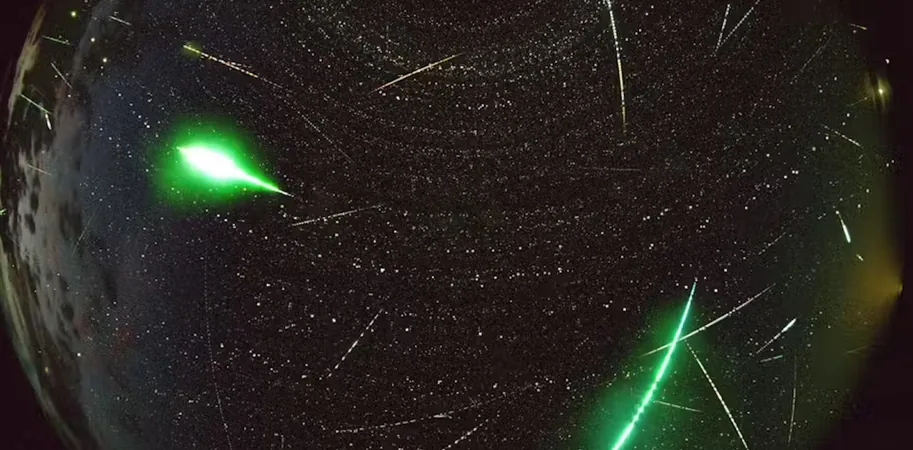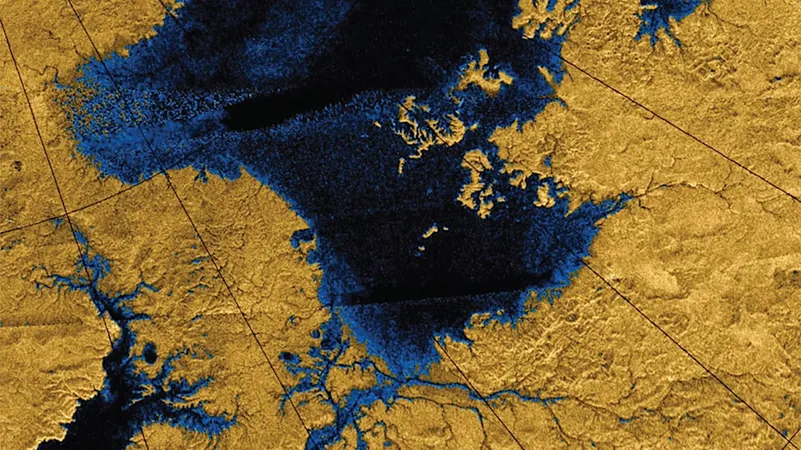
The Mystery of Water-Rich Meteorites: Unraveling Cosmic Secrets
2025-04-14
Author: Daniel
The Cosmic Riddle of Meteorites
Meteorites, the remnants of ancient celestial bodies, offer a fascinating glimpse into the early solar system. Among these, carbonaceous chondrites stand out as the oldest and most primitive, containing vital traces of water, carbon, and organic compounds. These hydrated rocks likely played a crucial role in delivering water to the nascent Earth, but a perplexing question remains: why do so few carbonaceous meteorites reach our planet?
The Asteroid vs. Meteorite Mystery
Asteroids, meteoroids, and comets vary in size and composition as they traverse space. Once these objects enter Earth’s atmosphere and survive, they become meteorites. You might think that since most asteroids are water-rich, more than half of meteorites should also be carbonaceous. Yet, astonishingly, fewer than 4% of meteorites found on Earth fit this description. So, where are all the carbonaceous chondrites?
Sample-Return Missions: A New Era in Meteorite Study
Exciting advancements in space exploration aim to solve this riddle. NASA's OSIRIS-REx and JAXA's Hayabusa2 missions have successfully returned samples from carbon-rich asteroids like Bennu and Ryugu, providing researchers with pristine material that sheds light on our solar system's early building blocks and the origins of life.
The Atmospheric Filter: A Discerning Barrier
For years, scientists believed that Earth’s atmosphere acted as a filter, removing fragile carbonaceous chondrites due to the extreme pressures and temperatures they encounter upon entry. These meteorites, being more crumbly than their robust counterparts, stand little chance of surviving the journey.
A Cosmic Tracking System: Observing Meteoroids in Real-Time
To uncover the truth about meteorite compositions, researchers have turned to cutting-edge observation techniques. Using global networks like FRIPON and the Global Fireball Observatory, scientists track meteoroids as they penetrate the atmosphere. These networks collect data on thousands of impacts, helping teams identify which asteroids contribute to the meteorite population.
The Shocking Discovery: The Sun's Role in Meteorite Survival
In a twist, new findings suggest that many carbonaceous fragments are eliminated in space long before they reach the Earth’s atmosphere. The intense heat from the Sun likely causes thermal cracking, breaking down these weaker materials, which ultimately reduces their chances of making it to Earth.
Survival of the Fittest: The Bias of Meteorite Composition
Only 30%-50% of the remaining asteroid fragments survive their atmospheric journey to become meteorites. Fragments that orbit closer to the Sun are often more resilient, leading to a survival bias. Thus, while scientists once attributed the rarity of carbonaceous meteorites solely to atmospheric phenomena, it seems that much of the problem begins in the void of space.
Looking Ahead: Future Discoveries Await
The journey to understanding meteorite composition continues. Advances in telescope technology and more refined models for atmospheric entry will allow scientists to detect and analyze incoming objects more effectively, driving us closer to unraveling this cosmic mystery. Stay tuned—what we learn could reshape our understanding of our solar system and the origins of life itself!


 Brasil (PT)
Brasil (PT)
 Canada (EN)
Canada (EN)
 Chile (ES)
Chile (ES)
 Česko (CS)
Česko (CS)
 대한민국 (KO)
대한민국 (KO)
 España (ES)
España (ES)
 France (FR)
France (FR)
 Hong Kong (EN)
Hong Kong (EN)
 Italia (IT)
Italia (IT)
 日本 (JA)
日本 (JA)
 Magyarország (HU)
Magyarország (HU)
 Norge (NO)
Norge (NO)
 Polska (PL)
Polska (PL)
 Schweiz (DE)
Schweiz (DE)
 Singapore (EN)
Singapore (EN)
 Sverige (SV)
Sverige (SV)
 Suomi (FI)
Suomi (FI)
 Türkiye (TR)
Türkiye (TR)
 الإمارات العربية المتحدة (AR)
الإمارات العربية المتحدة (AR)